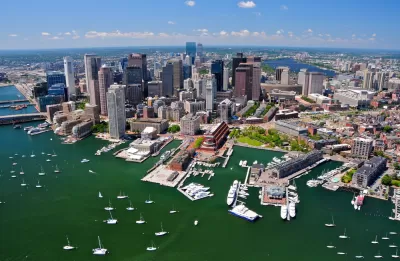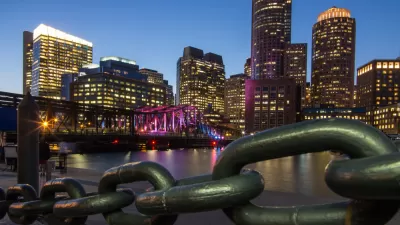The big news about GE moving to Boston is more than just a story about a large company moving from the suburbs to the big city—it's also about how far cities will go to attract new jobs, and at what cost.

"GE got a pretty good deal on their new, Boston home," writes Evan Horowitz.
Although Horowitz mentions Boston's charms—both of location and population—the point here is offer critical analysis of the massive tax breaks the company received to change locations. The details of the deal to bring the company to Boston include, according to Horowitz, "up to $25 million in property tax breaks, as much as $120 million for infrastructure to support the creation of a new corporate campus, and perhaps another $125 million to upgrade nearby roads and bridges."
The article then explains, point-by-point, the policy debate over the effectiveness of luring businesses between states with such lucrative incentives. One of the article's clear messages is not to overplay the importance of this deal to bring 800 employees to a Massachusetts economy that created 6,000 jobs a month in 2015:
Good or bad, though, it’s important to recognize that the GE deal is teeny, a small move in the broader game of economic development. GE’s arrival isn’t to going transform Massachusetts, and the tax incentives will barely make a ripple in the nearly $40 billion state budget.
FULL STORY: Are incentives like those for GE effective in building an economy?

Study: Maui’s Plan to Convert Vacation Rentals to Long-Term Housing Could Cause Nearly $1 Billion Economic Loss
The plan would reduce visitor accommodation by 25,% resulting in 1,900 jobs lost.

North Texas Transit Leaders Tout Benefits of TOD for Growing Region
At a summit focused on transit-oriented development, policymakers discussed how North Texas’ expanded light rail system can serve as a tool for economic growth.

Why Should We Subsidize Public Transportation?
Many public transit agencies face financial stress due to rising costs, declining fare revenue, and declining subsidies. Transit advocates must provide a strong business case for increasing public transit funding.

How to Make US Trains Faster
Changes to boarding platforms and a switch to electric trains could improve U.S. passenger rail service without the added cost of high-speed rail.

Columbia’s Revitalized ‘Loop’ Is a Hub for Local Entrepreneurs
A focus on small businesses is helping a commercial corridor in Columbia, Missouri thrive.

Invasive Insect Threatens Minnesota’s Ash Forests
The Emerald Ash Borer is a rapidly spreading invasive pest threatening Minnesota’s ash trees, and homeowners are encouraged to plant diverse replacement species, avoid moving ash firewood, and monitor for signs of infestation.
Urban Design for Planners 1: Software Tools
This six-course series explores essential urban design concepts using open source software and equips planners with the tools they need to participate fully in the urban design process.
Planning for Universal Design
Learn the tools for implementing Universal Design in planning regulations.
Ascent Environmental
Borough of Carlisle
Institute for Housing and Urban Development Studies (IHS)
City of Grandview
Harvard GSD Executive Education
Toledo-Lucas County Plan Commissions
Salt Lake City
NYU Wagner Graduate School of Public Service




























